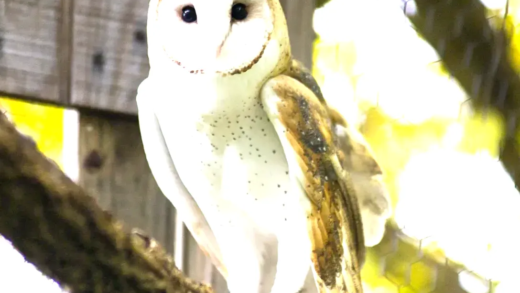This article covers the most dangerous insects, their role in disease transmission, and how to protect oneself. It discusses various habitats and regions where these insects thrive and provides first aid steps for insect bites. Additionally, it highlights the importance of studying insect venom and their ecological roles.
The Most Dangerous Insects
Dangerous insects can pose significant threats to human health and safety. Among the most notorious are mosquitoes, ticks, and certain species of ants. Mosquitoes are often considered the deadliest insects, responsible for transmitting diseases such as malaria, dengue fever, and Zika virus. Ticks, on the other hand, can carry Lyme disease and Rocky Mountain spotted fever, making them equally perilous.
Another group to watch out for includes venomous ants, such as the bullet ant, known for its extremely painful sting. The bullet ant is often described as the “world’s most painful sting,” and its venom can cause intense suffering. Understanding these insects helps us appreciate the importance of vigilance in areas where they are prevalent.
How Insects Spread Deadly Diseases
Insects spread deadly diseases primarily through biting and feeding. When an insect, like a mosquito, bites a human, it can inject saliva containing pathogens into the bloodstream. This process is known as vector transmission. For instance, when a female Anopheles mosquito bites, it transmits the malaria parasite from one host to another.
Ticks also employ a similar method. They attach themselves to a host and can transmit various diseases during feeding. Understanding these mechanisms is crucial for developing strategies to reduce disease transmission. Protective measures, such as using insect repellent and wearing long sleeves, can greatly decrease the risk of bites and subsequent disease transmission.
Types of Diseases Transmitted by Insects
Insects are responsible for a variety of diseases that affect millions worldwide. Some common diseases transmitted by insects include:
- Malaria: Spread by Anopheles mosquitoes, malaria affects over 200 million people annually.
- Dengue Fever: Transmitted by Aedes mosquitoes, dengue can cause severe flu-like symptoms.
- Lyme Disease: Caused by Borrelia bacteria, Lyme disease is spread by black-legged ticks.
- West Nile Virus: This virus is primarily transmitted by mosquitoes and can lead to serious neurological illnesses.
- Chikungunya: Another virus spread by Aedes mosquitoes, causing debilitating joint pain.
Awareness of these diseases and their insect vectors is vital for prevention and control efforts. It underscores the importance of public health initiatives aimed at reducing insect populations and educating communities about protective measures.
Insects with Toxic Venom
Insects with toxic venom can cause serious harm to humans. Among these, the bull ant stands out, known for its excruciating sting that can leave a person in agony for hours. Another infamous insect is the box jellyfish, although not an insect in the traditional sense, its venom is so potent that it can cause heart failure in minutes. The fire ant is also notorious; its sting can cause a burning sensation followed by painful blisters.
Other venomous insects include the black widow spider and the brown recluse spider. Their bites can lead to severe medical conditions, requiring immediate attention. Awareness of these venomous insects is crucial, especially for those living in regions where they are prevalent.
Effects of Insect Venom on Humans
The effects of insect venom on humans can range from mild irritation to severe allergic reactions. For instance, venom from bees and wasps can cause localized swelling and pain. In some cases, it can trigger anaphylaxis, a life-threatening condition requiring immediate medical intervention.
Venom from spiders, such as the black widow, can cause muscle cramps, nausea, and even respiratory distress. The symptoms depend largely on the type of venom and the individual’s health condition. Understanding these effects is vital for timely treatment. Insect bites can lead to serious health issues if not addressed promptly, emphasizing the need for knowledge about these dangerous insects.
Interesting Facts About Dangerous Insects
Dangerous insects are not only harmful but also fascinating. For instance, did you know that the bullet ant has a sting so painful that it ranks 4.0+ on the Schmidt Sting Pain Index? This index rates insect stings based on human experience. Another interesting fact is that mosquitoes are responsible for more human deaths annually than any other animal, primarily due to the diseases they transmit.
Moreover, some insects, like the bombardier beetle, can defend themselves by ejecting a hot, noxious chemical spray. This unique ability showcases the adaptability of insects in their quest for survival. Learning about these intriguing facts can enhance our understanding of the ecological roles these insects play, despite their dangers.
How to Protect Yourself from Dangerous Insects
Protecting yourself from dangerous insects is essential for avoiding bites and the diseases they can carry. Here are some practical tips:
- Use Insect Repellents: Apply repellents containing DEET or Picaridin on exposed skin to deter insects.
- Wear Protective Clothing: Dress in long sleeves, long pants, and light-colored clothing to reduce the risk of bites.
- Avoid Peak Activity Times: Many insects, like mosquitoes, are most active during dawn and dusk. Limit outdoor activities during these times.
- Use Mosquito Nets: When sleeping in areas with high mosquito populations, use treated nets for added protection.
- Keep Your Environment Clean: Eliminate standing water and maintain your yard to reduce insect breeding grounds.
Implementing these measures can significantly reduce encounters with dangerous insects, ensuring better safety for you and your loved ones.
Habitats of Dangerous Insects
Dangerous insects thrive in various habitats depending on their species. Understanding these environments can help in avoiding them. Common habitats include:
- Wetlands and Swamps: Mosquitoes and other biting insects often breed in stagnant water found in these areas.
- Forests and Woodlands: Ticks are prevalent in wooded areas, especially where deer roam, as they rely on these animals for their life cycle.
- Urban Areas: Some insects, like cockroaches and ants, adapt well to human environments, searching for food and shelter.
- Grasslands: Fire ants and certain species of wasps are commonly found in grassy areas, posing risks to those who venture into these regions.
Being aware of these habitats can help individuals take preventive measures when traveling or spending time outdoors.
Regions with Dangerous Insects
Different regions have varying concentrations of dangerous insects. Some notable areas include:
- Tropical Regions: Areas near the equator are often home to numerous species of mosquitoes that spread diseases like malaria and dengue fever.
- North America: Lyme disease is prevalent in the Northeastern United States due to the abundance of deer ticks.
- Africa: Countries in Sub-Saharan Africa face significant threats from insects like tsetse flies and mosquitoes.
- Australia: Home to various venomous insects, including spiders and ants, Australia requires caution for outdoor enthusiasts.
Being informed about these regions can help travelers take necessary precautions against dangerous insects.
What to Do If Bitten by an Insect
If you are bitten by an insect, it’s crucial to respond appropriately to minimize potential complications. Follow these first aid steps:
- Stay Calm: Panicking can worsen the situation. Remain calm to assess the bite.
- Clean the Area: Wash the bite site with soap and water to prevent infection.
- Apply a Cold Compress: Use a cold pack to reduce swelling and relieve pain.
- Take Pain Relievers: Over-the-counter medications like ibuprofen can help manage pain and inflammation.
- Monitor for Allergic Reactions: Watch for signs of severe reactions, such as difficulty breathing, swelling, or hives. Seek medical attention if these occur.
Taking these steps can help manage insect bites effectively and prevent further health issues.
Studying Insect Venom Effects
Researching insect venom is vital for understanding its effects on human health. Scientists conduct studies focusing on:
- Venom Composition: Analyzing the chemical makeup of venom helps in identifying its potential medical applications.
- Effects on the Human Body: Researchers observe how venom interacts with human cells and the immune system.
- Development of Antivenoms: Studies aim to create effective treatments for venomous bites, improving recovery outcomes.
Such research not only aids in medical advancements but also enhances public awareness about dangerous insects.
The Role of Insects in the Ecosystem
Despite their dangers, insects play crucial roles in ecosystems. They contribute to:
- Pollination: Many insects, like bees, are essential for pollinating plants, which supports food production.
- Decomposition: Insects help break down organic matter, recycling nutrients back into the soil.
- Food Source: They serve as food for various animals, maintaining the balance within food webs.
Understanding these roles helps us appreciate the ecological importance of insects, despite the risks they pose to humans.





Comments are closed.